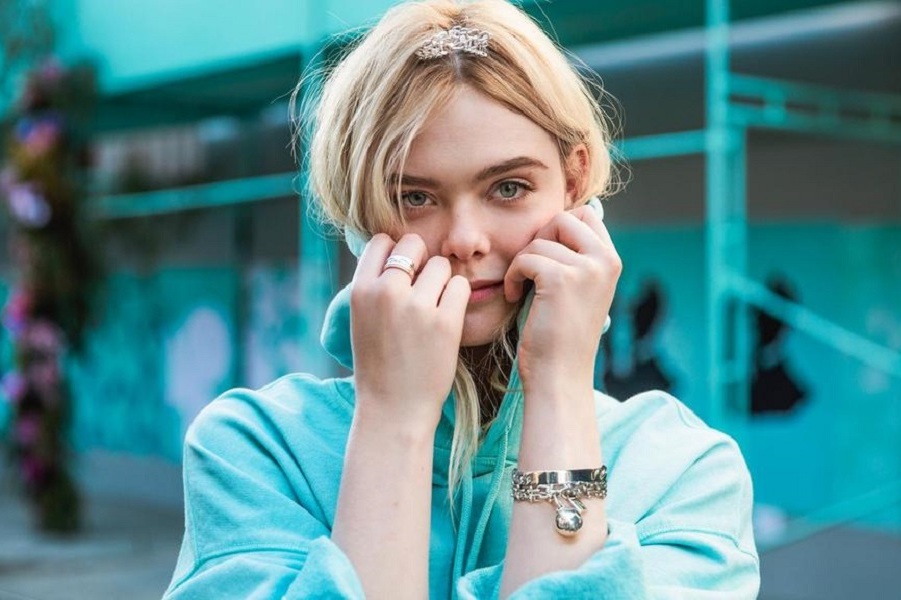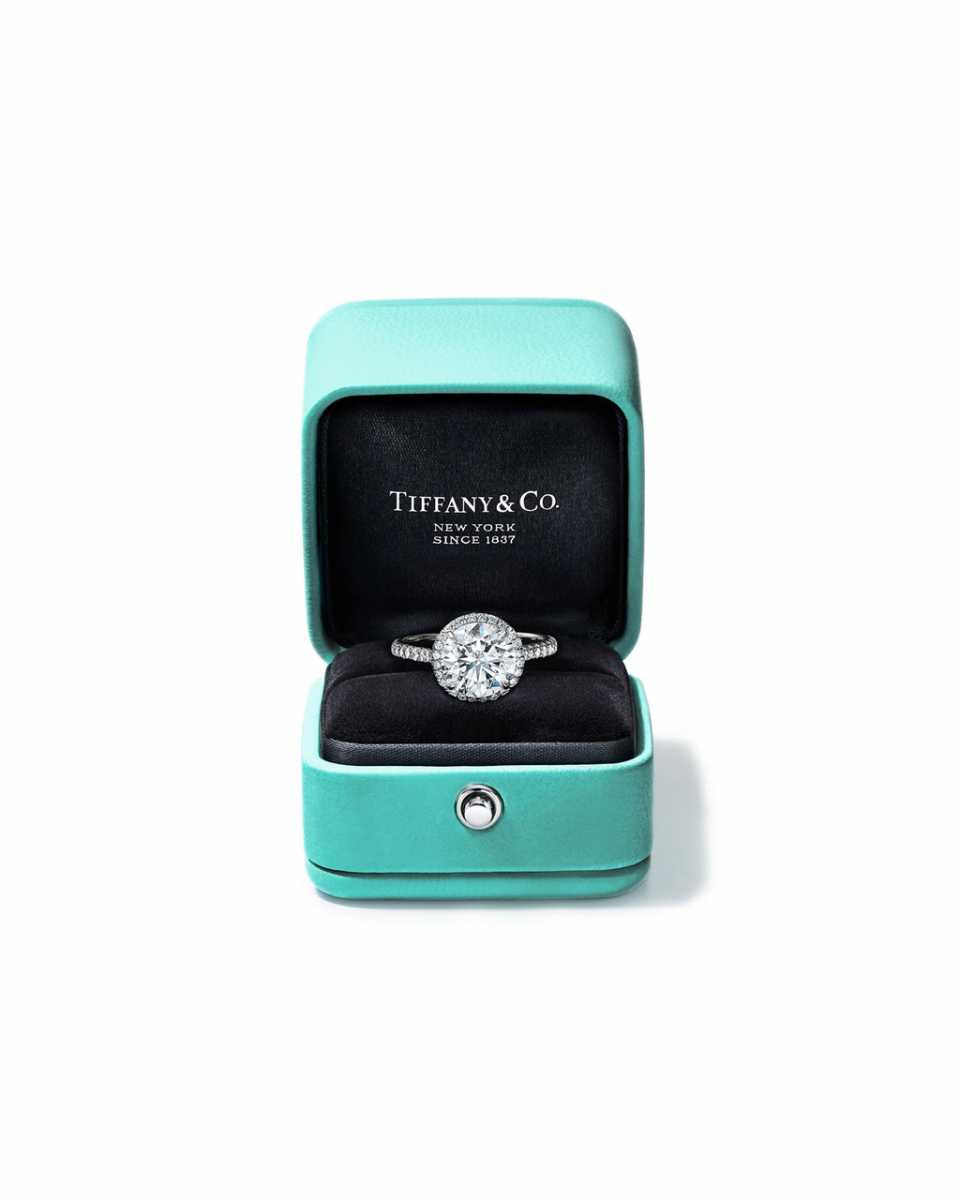Tiffany CEO Alessandro Bogliolo: 'The business of love is growing' (Video)
By Aliheydar_Rzayev Sunday, 16 September 2018 2:35 PM

Elle Fanning, clad in a hoodie and jeans and sipping on a takeaway coffee, approaches the Tiffany & Co flagship on Fifth Avenue and peers into a window. The melodious opening lines of Moon River, the song made famous by the Audrey-Hepburn classic, Breakfast at Tiffany’s, play in the background. And then rapper A$ap Ferg interjects with a “I ain’t window shopping today”, and everything goes haywire. Fanning is transported into a “Tiffany world”, where she shows off her hip-hop moves amid New York taxi cabs, buildings, bridges and residents that are all clad in the brand’s trademark shade of robin-egg blue.
Tiffany’s spring campaign, Believe in Dreams, is a stroke of marketing genius. Fanning: so young, so relevant, so gloriously casual. A$Ap Ferg’s rhymes: so far from what you might expect from this classic, history-laden 181-year-old brand. The message: this is Tiffany, recut.
The campaign spotlights Tiffany’s latest collection, Paper Flowers, which launched in the Middle East this month. It is, notably, the first to be created by the brand’s new artistic director, Reed Krakoff, the man credited with transforming Coach into a luxury powerhouse, whose expertise, interestingly, lies in fashion rather than fine jewels. His debut collection for Tiffany is “about stripping away all of the rules associated with fine jewellery,” he says. He started with the idea of flower petals cut from paper and took it from there.
The result is a masterful exercise in subtlety. There are stunningly simple three-petalled flowers seemingly held together by a barely-there central pin; a delicate firefly with a yellow diamond for a body and wings fluttering with diamonds; the odd flash of blue, courtesy of eye-catching tanzanite; and a necklace of mixed-cut diamonds that looks like a flowery wreath. The entire collection is crafted from platinum, and is incredibly ambitious in its scope. It extends from simple everyday pieces that retail for about GBP2,300 through to a high-jewellery bib necklace featuring 68 carats of diamonds that is worth over million pounds.
 Paper Flowers is a nod to Tiffany’s know-how, particularly when it comes to diamonds and platinum, but also a symbol of its plans for the future, Alessandro Bogliolo, the company’s chief executive, explains when I meet him at the collection’s London launch. Bogliolo joined the brand in October 2017 and was also, arguably, something of a left field choice. He is an industry veteran (although he admits to hating the term), having spent 16 years at Bulgari, but his more recent roles were at Sephora and Diesel, a brand that is as famed for its irreverence as Tiffany is for its polished consistency. “In the last few years, Tiffany & Co has behaved in a very safe way – a bit conservative,” he admits. “The DNA of the brand is, for sure, understated, obsessed with good taste, and more about balance and equilibrium than excess, but it has never been a conservative brand.
Paper Flowers is a nod to Tiffany’s know-how, particularly when it comes to diamonds and platinum, but also a symbol of its plans for the future, Alessandro Bogliolo, the company’s chief executive, explains when I meet him at the collection’s London launch. Bogliolo joined the brand in October 2017 and was also, arguably, something of a left field choice. He is an industry veteran (although he admits to hating the term), having spent 16 years at Bulgari, but his more recent roles were at Sephora and Diesel, a brand that is as famed for its irreverence as Tiffany is for its polished consistency. “In the last few years, Tiffany & Co has behaved in a very safe way – a bit conservative,” he admits. “The DNA of the brand is, for sure, understated, obsessed with good taste, and more about balance and equilibrium than excess, but it has never been a conservative brand.
“Imagine Charles Lewis Tiffany, in 1837, going from New York to Paris to buy the French crown jewels and all the jewels that the French aristocracy were selling off at the time. And then bringing them to New York, dismantling them and making new jewels. Think about taking diamond rings which, at the time, were all set in a bezel, and putting in a six-prong setting. That was revolutionary. Think about having Schlumberger as a house designer; think about Elsa Peretti in the 1970s or Andy Warhol, who painted Christmas cards for Tiffany. Andy Warhol? Conservative?”
Bogliolo is on a mission to bring some of that boldness back. And so far, it seems to be working. In 2017, sales amounted to nearly $4.2 billion, up 4 percent year on year. In the first quarter of 2018, however, sales rose 15 per cent, compared to the previous year, hitting $1 billion.
The key to this success could be Bogliolo’s understanding of the evolving nature of luxury. “Luxury had a very Euro-centric definition; it said that luxury is for the very happy few, for royalty, or for very special occasions, at a very high price and based on exclusivity. This is the traditional paradigm of luxury,” he says.
“But when you look at the younger generation, it is not about buying jewellery to put in a safe; and it is not so much about buying jewellery to impress you, but rather to please myself. If you ask me what luxury is, in reality, it is something extraordinary that has to give you joy and pleasure; it is something very intimate,” Bogliolo suggests.
This is a decidedly American ideal, where definitions of luxury are more casual and relaxed, and less tied into age-old hierarchies and class systems. And while Tiffany may be evolving, it is proudly connected to its New York roots. That Big Apple mentality is integral to the way that it artfully melds the old with the new and the poetic with the industrial – A$ap Ferg rapping over Moon River is the perfect metaphor for this.
“New York has this vitality, and energy and wit – what is particularly typically of New York is this wit – and Reed Krakoff has it 100 per cent," says Bogliolo. "You see it in the fact that you have this beautiful million dollar necklace, but it’s inspiration is a worthless paper flower. That is very much New York. In New York, you can have the best of everything – the best art, the best culture, the best clothing, the best food, the best whatever; but at the same time, it is not pretentious.”
In America, after all, “you can wear your 10 carat diamond to go to Whole Foods supermarket and you know what, no one will pay attention to you. It’s purely for your own pleasure,” Bogliolo points out.
This casualisation of diamonds also extends to engagement rings, of which Tiffany’s has long been the master. A lesser man than Bogliolo might be concerned that across the western world, the number of marriages is in decline. In the United States in 2017, 45.2 per cent of people over the age of 18 were single, compared to just 28 per cent in 1970, according to the US Census. But while marriage might be on the decline, love is not, says Bogliolo – and consequently, neither are diamond rings.
“The diamond ring is not limited anymore to engagement. It has gone back to the original reason why the diamond ring exists – because mankind has always been attracted by gemstones and the diamond is the hardest of stones, so it represents the eternity of your love or union. In recent centuries, the diamond ring has become synonymous with engagement and marriage. But in reality , love is more than that. People nowadays still have this natural attraction to the diamond for its symbolic value - whether it is for a wedding, for an engagement, but also after a wedding, or without a wedding.
“People ask me if I am worried because the rate of weddings is decreasing; but the number of weddings is not the right KPI for diamond rings. The right KPI for diamond rings is how much people love each other and how many people love each other. And as the population is growing, the business of love is growing.”
The National




























Add new comment